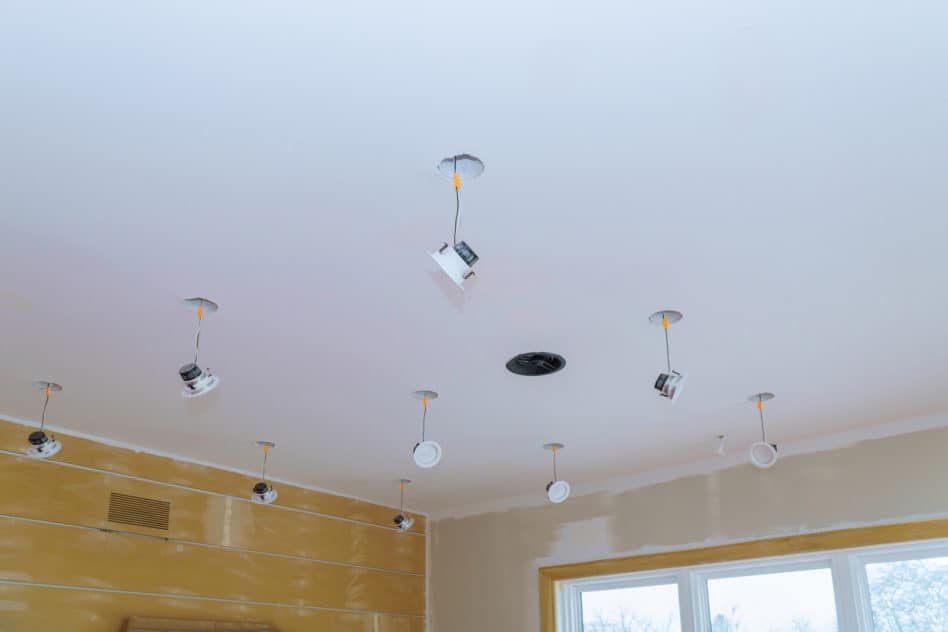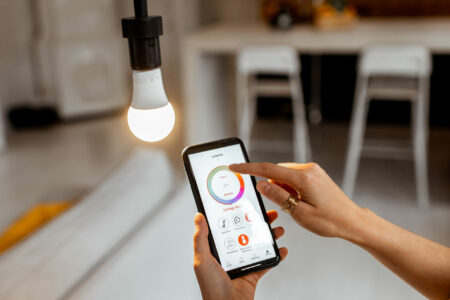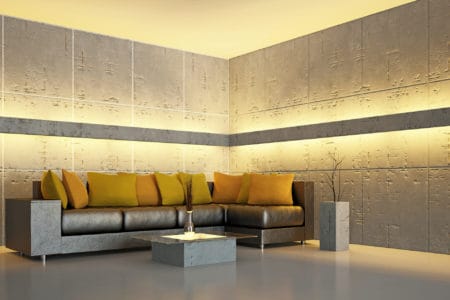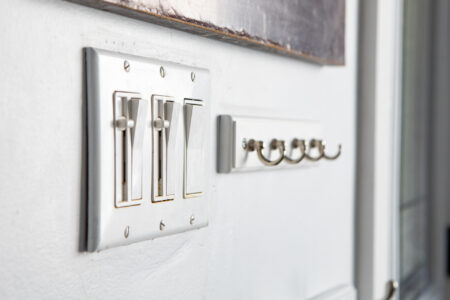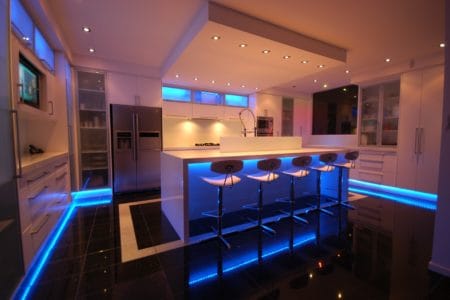Recessed spotlights and ceiling spots can be used to create beautifully uniform lighting. But unlike a ceiling light mounted in the center of the room, some planning is necessary before installing the spots. How many spots per ft² are actually needed? And at what distance should they be mounted? This spot calculator helps you with your calculation.
Calculate recessed lights & ceiling spots
LED spots are an excellent choice for basic lighting in all kind of rooms. For this purpose, the spotlights can be recessed into the ceiling. But first you need to determine where the spotlights should be placed at all. Because a later change is only possible with great effort. In addition to the optimal number and spacing of the spots, the following parameters are important.
Parameters for Recessed Light Calculation
Beam Angle
At what beam angle does the light emerge from the spotlight? The beam angle is specified for all spots and tells how large the circle of light appears below the spot.
Brightness
The brightness of a single LED spotlight is important to achieve the desired illuminance in the room. The brightness of LED spots is expressed in lumens (lm).
Illuminance
The illuminance (in lux) describes the desired brightness in the room from all available light sources. The lux value stands for lumens per square meter.
Room Dimensions
Of course the dimensions of the room are also important to plan your recessed lights.
Recessed Lighting Calculator
First enter all parameters into the calculator to calculate the required number of spots. The beam angle and lumen specification can be taken from your choosen spots. The illuminance is the desired target value for the respective room. After clicking Calculate, the minimum number of recessed lights is calculated in order to achieve a consistent illumination in your room.
About the Calculator
Especially in larger rooms, the lighting design can become quite complex if you want to take all factors into account. Keep in mind that the spot calculator can only work with a simplified model to give a rough estimate.
Spot Distance
The tool calculates with a distance between two spots of 1.5 times the radius of the light circle. This ensures a maximum overlap of the light cones with half the radius of a light circle. This ensures that even with four spots with a square arrangement, there is no unlit area in the center.
Increase the Distance
In the case of a 1-row installation, for example in a narrow hallway, such a generous overlapping of the light circles is not necessary in most cases. Here the distance can be decreased to just under 2 times the radius of the light circle.
Spot Quantity
The spot number is calculated by a simple mathematical model. For certain parameters, the result can show an asymmetric number of spotlights even in a square room. In practice, one would often round up the number or down for a better symmetry.
Minimum Brightness
The lux specification as a target value for the illuminance serves as a minimum value in the calculation. In case of spots with small beam angles, the resulting illuminance can be significantly higher. Otherwise no uniform illumination would be possible due to the small light circles.
Conclusion
For the planning of ceiling spots and recessed lights you should invest some time. Any later correction would be very costly. With the spot calculator you can do a rough pre-planning for the number of needed spots. But to take all factors into account, such as the best placement, the optimal distance or the reflection behavior of the furnishings, a professional lighting design is required.
